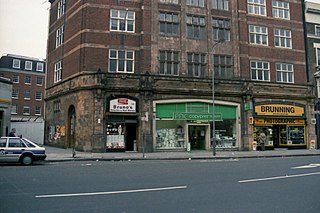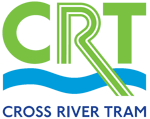Subterranean London refers to a number of subterranean structures that lie beneath London. The city has been occupied by humans for two millennia. Over time, the capital has acquired a vast number of these structures and spaces, often as a result of war and conflict.

The Kingsway tramway subway is a cut-and-cover tunnel in central London, built by the London County Council, and the only one of its kind in Britain. The decision in 1898 to clear slum districts in the Holborn area provided an opportunity to use the new streets for a tramway connecting the lines in the north and south. Following the pattern of tramways in New York and Boston, it was decided to build this as an underground connection.

Aldwych is a closed station on the London Underground, located in the City of Westminster in Central London. It was opened in 1907 with the name Strand, after the street on which it is located. It was the terminus of the short Piccadilly line branch from Holborn that was a relic of the merger of two railway schemes. The station building is close to the Strand's junction with Surrey Street, near Aldwych. During its lifetime, the branch was the subject of a number of unrealised extension proposals that would have seen the tunnels through the station extended southwards, usually to Waterloo.

Holborn is a London Underground station in Holborn, Central London, located at the junction of High Holborn and Kingsway. It is served by the Central and Piccadilly lines and is located in Travelcard Zone 1. On the Central line the station is between Tottenham Court Road and Chancery Lane stations, and on the Piccadilly line it is between Covent Garden and Russell Square stations. Close by are the British Museum, Lincoln's Inn Fields, Red Lion Square, Bloomsbury Square, London School of Economics and Sir John Soane's Museum.

British Museum was a station on the London Underground, located in Holborn, central London. It was latterly served by the Central line and took its name from the nearby British Museum in Great Russell Street.

Aldwych is a street and the name of the area immediately surrounding it, in the City of Westminster, part of Greater London, and is part of the West End Theatreland. The 450 metres (1,480 ft) street starts 600 metres (2,000 ft) east-northeast of Charing Cross, the conventional map centre-point of the capital city.
Kingsway or King's Way may refer to:
Kingsway Underpass may refer to:

Holborn tramway station was a tram stop underneath Kingsway in central London, England. It was built in 1906 by the London County Council Tramways as part of the Kingsway tramway subway, joining the separate networks of tramways in North and South London. When opened it was named Great Queen Street.

The Strand underpass is a one-way road tunnel in central London connecting Waterloo Bridge to Kingsway near Holborn. Opened in 1964, it was built within the former Kingsway tramway subway, which closed in the 1950s. It is open to motor vehicles, pedestrians and horse riders but not cyclists as indicated on signs.
There have been two separate generations of trams in London, from 1860 to 1952 and from 2000 to the present. There were no trams at all in London between 1952 and 2000.

The A4200 is a major thoroughfare in central London. It runs between the A4 at Aldwych, to the A400 Hampstead Road/Camden High Street, at Mornington Crescent tube station, via Holborn, Bloomsbury, Euston and Somers Town.

Cross River Tram was a Transport for London (TfL) proposal for a 10-mile (16 km) tram system in London. It was planned to run on a north–south route from Camden Town in the north, via King's Cross, to Peckham and Brixton in the south.
The London County Council Tramways was an extensive network of public street tramways operated by the council throughout the County of London, UK, from 1899 to 1933, when they were taken over by the London Passenger Transport Board.

London Buses route 171 is a Transport for London contracted bus route in London, England. Running between Elephant and Castle and Catford bus garage, it is operated by Go-Ahead London.

Warrington Corporation Tramways was the owner and operator of an electric tramway system in the early 20th century serving the town of Warrington, at the time a county borough of Lancashire, England.

The Great Northern, Piccadilly and Brompton Railway (GNP&BR), also known as the Piccadilly tube, was a railway company established in 1902 that constructed a deep-level underground "tube" railway in London, England. The GNP&BR was formed through a merger of two older companies, the Brompton and Piccadilly Circus Railway (B&PCR) and the Great Northern and Strand Railway (GN&SR). It also incorporated part of a tube route planned by a third company, the District Railway (DR). The combined company was a subsidiary of the Underground Electric Railways Company of London (UERL).

Trolleybuses served the London Passenger Transport Area from 1931 until 1962. For much of its existence, the London system was the largest in the world. It peaked at 68 routes, with a maximum fleet of 1,811 trolleybuses.

The Royal Commission on London Traffic was a royal commission established in 1903 with a remit to review and report on how transport systems should be developed for London and the surrounding area. It produced a report in eight volumes published in 1905 and made recommendations on the character, administration and routing of traffic in London.
Kingsway Tunnel(s) may refer to:














